Tag: spring
Spring is coming! Or is it already here?
The Eugene Team shares their favorite signs of springtime
“Many buds are starting to swell,” Erik Burke says when asked when spring will arrive. “Witch-hazel, Persian ironwood and osoberry are all insect-pollinated woody plants that are blooming. Spring is here.”
The Eugene Director has always noted that the seasons aren’t evenly distributed in Western Oregon and Southwest Washington. “We have a short autumn, a relatively short winter, and long springs and summers. November is our wettest month on average, January is our coldest month, and while February can be cold, spring typically begins early in the month.”
Meteorologists observe March 1st as the first day of spring. Our calendars say March 19, the vernal equinox, when the days finally begin to be longer than the nights. But plants are on their own schedule.
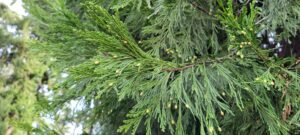
“It’s a gradual roll out,” Erik says. We’ll see camas come out of the ground in December or early January as the incense cedar starts blooming. Filberts pollinate in January, and in February, we’re seeing willows leafing out, and daffodils and cottonwoods blooming.
“When the cottonwood buds drop on the bike path, it’s the best smell ever,” Erik says. “And in March, our native wildflowers are just beautiful.”
Some ecologists point to osoberry blooming as the first sign of spring, because it’s the first native insect-pollinated woody plant to bloom, and blooms with or just after the introduced witch-hazel and Persian ironwood.
“I love when the forest edges are covered in osoberry blooms,” says Taylor, our Eugene-Springfield Program Manager “I love that the days are getting longer faster. I love seeing the native bulbs lush and thriving.”

Spring is when we see the most pollen from the wind-pollinated trees that cause allergies. But luckily, it’s during the rainy season, and rain will knock a lot of those allergens out of the air. Incense cedar is the first to put out its pollen, followed by filbert, cottonwood, alder, birch, and hornbeam. Ash and oak follow in April.
Our early spring allows for most trees and plants to wrap up their reproductive processes by May, ahead of our annual summer drought. Until then, we get to enjoy the kaleidoscope of blooms in our canopy, across our hillsides, and in our own yards and gardens.
Leaflet: Spring Tree Care
Spring has Sprung – What that means for your trees
Spring has truly come in fits and starts this year. Some of us might still feel like it’s winter, and some are ready to announce that Spring has sprung! Trees are the same way when it comes to breaking dormancy. Some are early risers, and some sleep in. A bunch of factors go into it, including species, daylight, and temperature.
Spring is the perfect time to notice seasonal cycles. The study of these periodic events in biological life cycles is called phenology. When does a tree go dormant, when do you start to see buds, how long is the growing season? We can see quite a range among species.
“Cornelian cherries normally bloom about this time of year,” says Neighborhood Trees Senior Specialist Andrew Land. “Whereas a few years back, someone approached me about an Oregon white oak that they thought was dead, until it finally broke bud in June.”
Andrew and other staff at Friends of Trees keep an eye on phenology as it particularly relates to survival. They take note of trends in trees’ responses to different stimuli like light and temperature, with the intent to prioritize the most climate adapted species.
Here are some things you can do to take care of your trees this time of year.
Mulch Madness
It’s a great time to refresh mulch as needed. The objective is to mulch the tips of the roots as they grow outward from the base of the trunk. They will grow into soil that’s moderate in temperature and contains moisture, factors that mulch will provide. Because the roots are growing outward, when you mulch trees in their second year in the ground, aim for more of a 4-5′ diameter ring of mulch, still 3” thick, about a foot from the base of the trunk.
You may have noticed that some trees hold their leaves through winter. They’re called marcescent leaves, and they are a sign of last season’s growth. You’ll see them on native oaks like Oregon white oak (Quercus garryana) and scarlet oaks (Quercus coccinea). Come spring time’s flush, these leaves will be shed to make room for new growth. You can use these leaves as mulch!
 Go easy on the pruning
Go easy on the pruning
It’s best to go easy with regard to pruning during “bud break.” This is when sap is rising up the tree, after having dropped to the roots in the fall. As the sap is rising, some trees (maples, for example) will “bleed” if pruned as sap is rising. It’s not harmful to the tree—that’s where maple syrup comes from, after all—but it can be disconcerting to see.
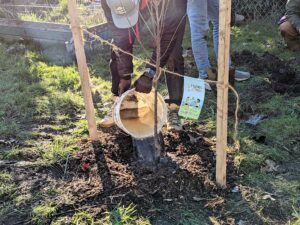
Weekly Watering
It’s almost time to start weekly watering for newly planted trees. “Deep and infrequent” is the recipe for success. Starting mid-April, 15 gallons all at once, once a week is ideal. Either a gator bag, hose on a gentle trickle for maybe 20 minutes, or a 5-gallon bucket with three 1/8″ holes drilled on the side at the bottom and filled 2-3 times consecutively works great.
If the temperature gets over 90 degrees, bump that up to twice a week. If we see another heat “event” coming, a good, deep soak beforehand is very wise as preventative medicine.

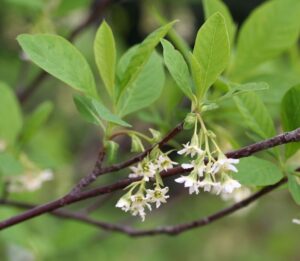
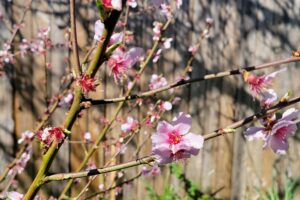
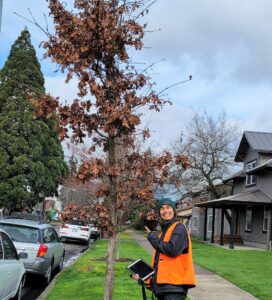 Go easy on the pruning
Go easy on the pruning